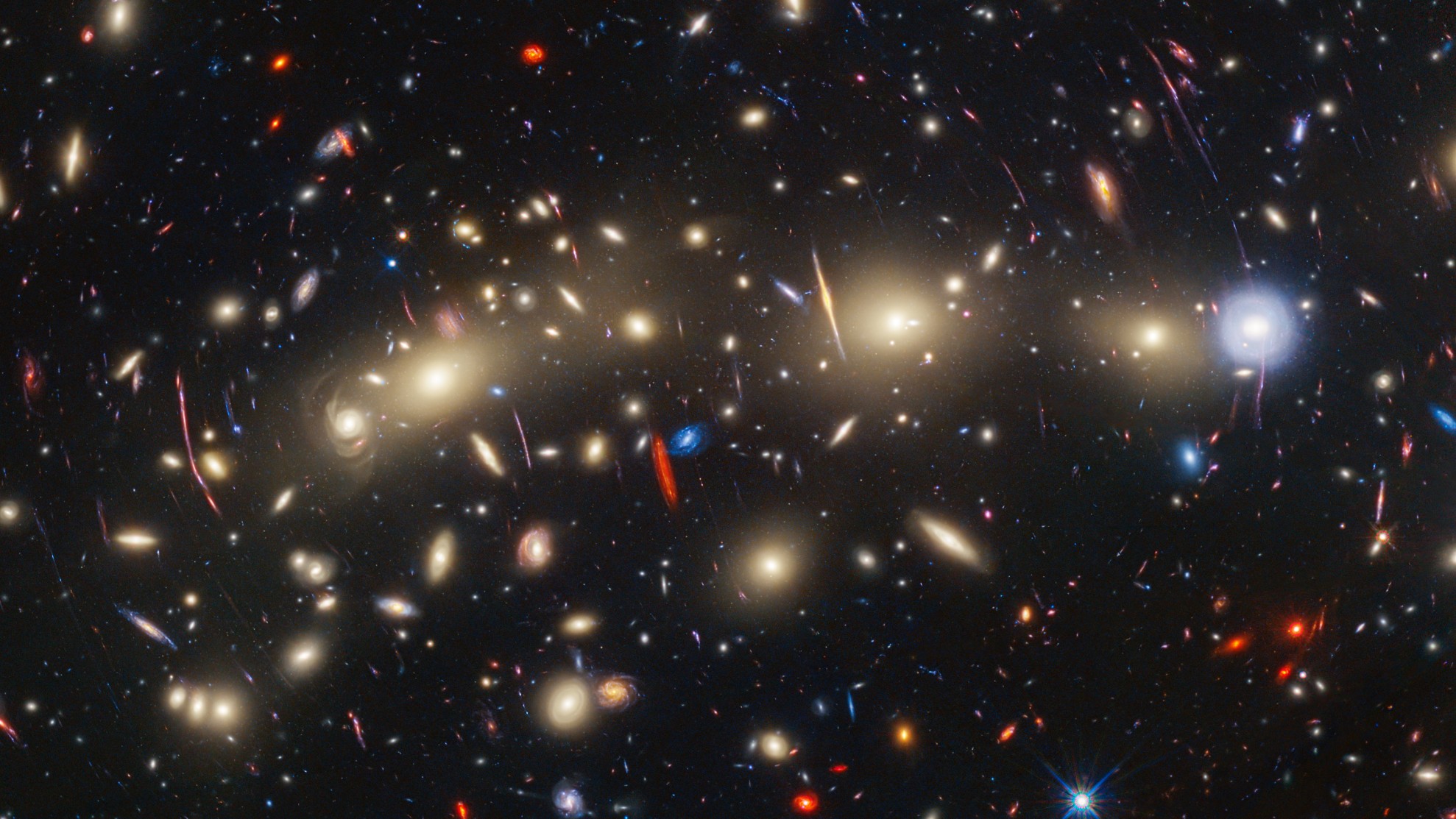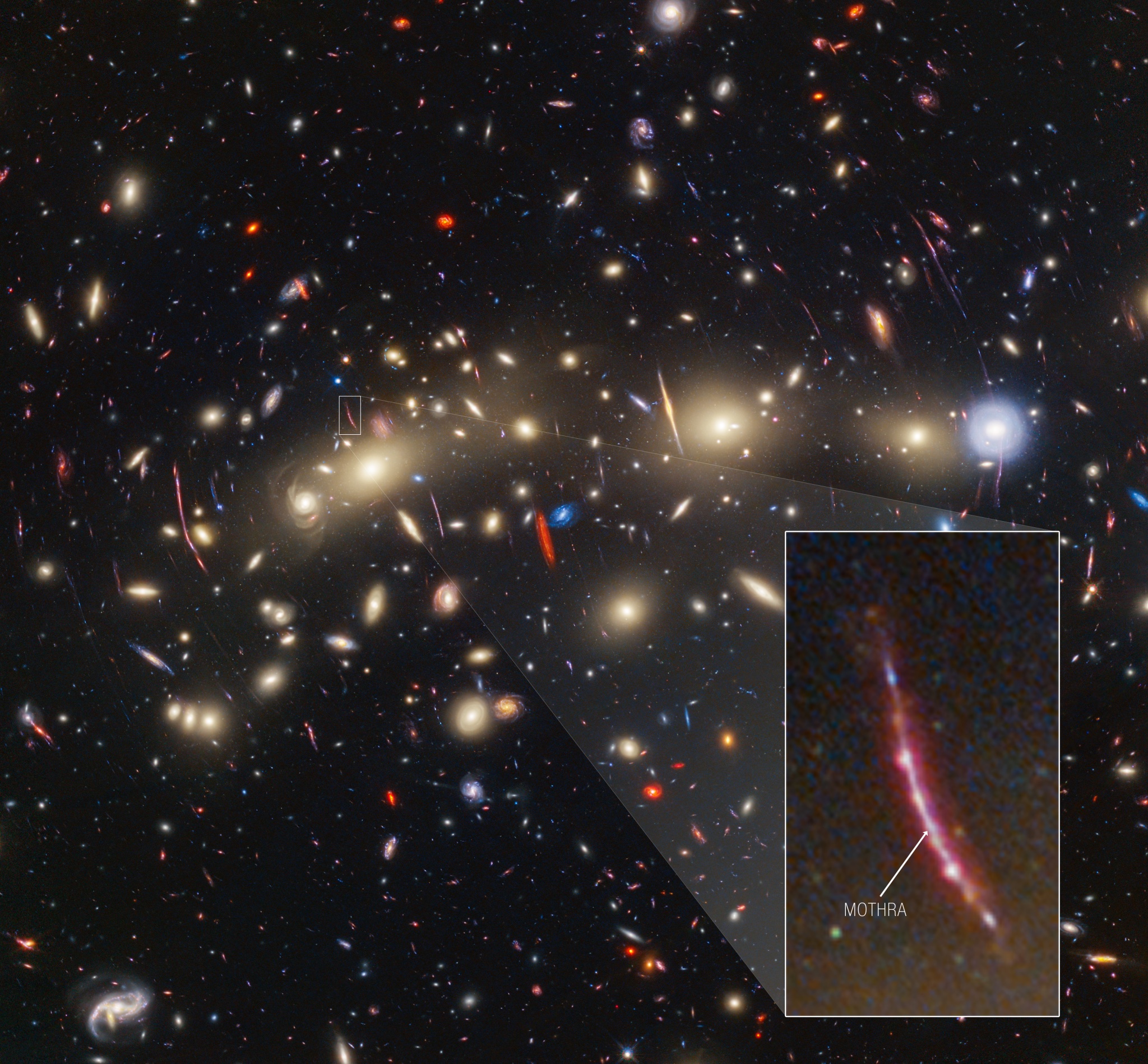
NASA has combined the power of its two premier space telescopes to produce one of the most colorful and comprehensive views of the universe ever.
Using data from the James Webb Space Telescope (JWST) and Hubble Space Telescope to collect light in different wavelengths, a new, combined image reveals a parade of stars and galaxies within the massive galaxy cluster MACS0416, 4.3 billion light-years from the solar system. While JWST detects infrared light invisible to humans, Hubble detects visible light; the resulting panchromatic image creates colors that help astronomers measure vast cosmic distances.
For example, a landscape of galaxies in blue and red can be seen surrounding the yellowish line of lights that make up MACS0416. The bluest galaxies, which mostly come from Hubble's data, are both the closest to Earth and the busiest hotbeds of star formation. The redder galaxies are much dustier and farther away. They're the work of JWST's infrared instruments, which can detect heat signatures through dust clouds.
The image also includes concentric circles curving around MACS0416. They're actually objects far behind, magnified by MACS0416's gravitational field. This gravitational lensing occurs when a massive foreground object distorts the space around it and bends the light from objects behind it. The result of this chance alignment is often referred to as a "cosmic magnifying glass," which both reveals and magnifies objects.
One of those magnified objects in the new image is an enormous star, nicknamed "Mothra." It's being magnified by a factor of at least 4,000 times, according to NASA.

"We're calling MACS0416 the Christmas Tree Galaxy Cluster, both because it's so colorful and because of these flickering lights we find within it," said Haojing Yan, professor of astronomy at the University of Missouri and lead author of a new paper describing the results, said in a NASA statement. The paper, available on the preprint database arXiv, has been accepted for publication in The Astrophysical Journal.
The image could be the first of many like it. Since 2014, Hubble has been busy imaging the faintest and youngest galaxies ever detected. And JWST is now adding valuable data about the early universe.
"The whole picture doesn't become clear until you combine Webb data with Hubble data," Rogier Windhorst, professor of astronomy at Arizona State University and principal investigator of the Prime Extragalactic Areas for Reionization and Lensing Science (PEARLS) program, which took the Webb observations, said in the statement. "We are building on Hubble's legacy by pushing to greater distances and fainter objects." While Hubble images took 122 hours to produce, JWST's — collected nine years after Hubble's — took just 22 hours.







